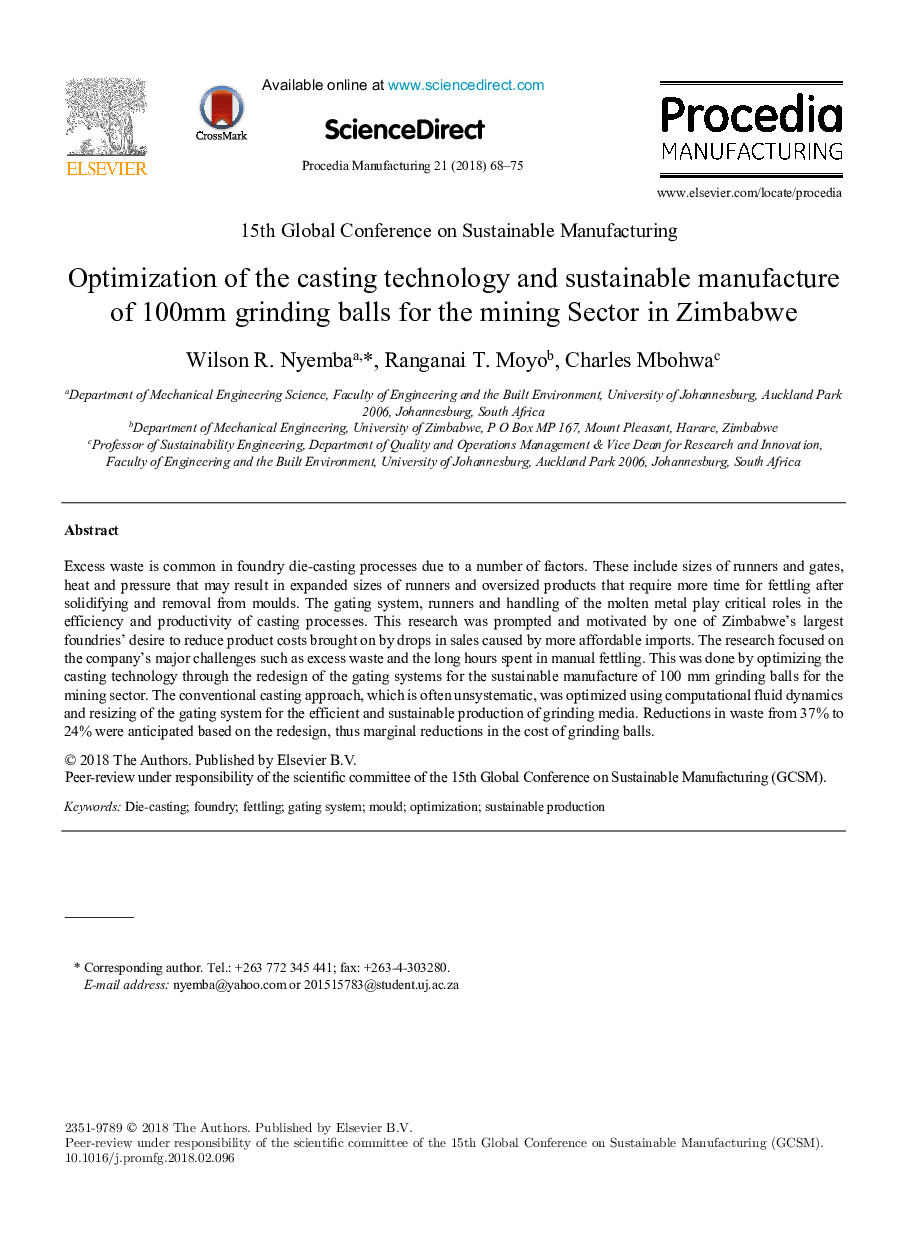| Article ID | Journal | Published Year | Pages | File Type |
|---|---|---|---|---|
| 7544961 | Procedia Manufacturing | 2018 | 8 Pages |
Abstract
Excess waste is common in foundry die-casting processes due to a number of factors. These include sizes of runners and gates, heat and pressure that may result in expanded sizes of runners and oversized products that require more time for fettling after solidifying and removal from moulds. The gating system, runners and handling of the molten metal play critical roles in the efficiency and productivity of casting processes. This research was prompted and motivated by one of Zimbabwe's largest foundries' desire to reduce product costs brought on by drops in sales caused by more affordable imports. The research focused on the company's major challenges such as excess waste and the long hours spent in manual fettling. This was done by optimizing the casting technology through the redesign of the gating systems for the sustainable manufacture of 100 mm grinding balls for the mining sector. The conventional casting approach, which is often unsystematic, was optimized using computational fluid dynamics and resizing of the gating system for the efficient and sustainable production of grinding media. Reductions in waste from 37% to 24% were anticipated based on the redesign, thus marginal reductions in the cost of grinding balls.
Related Topics
Physical Sciences and Engineering
Engineering
Industrial and Manufacturing Engineering
Authors
Wilson R. Nyemba, Ranganai T. Moyo, Charles Mbohwa,
